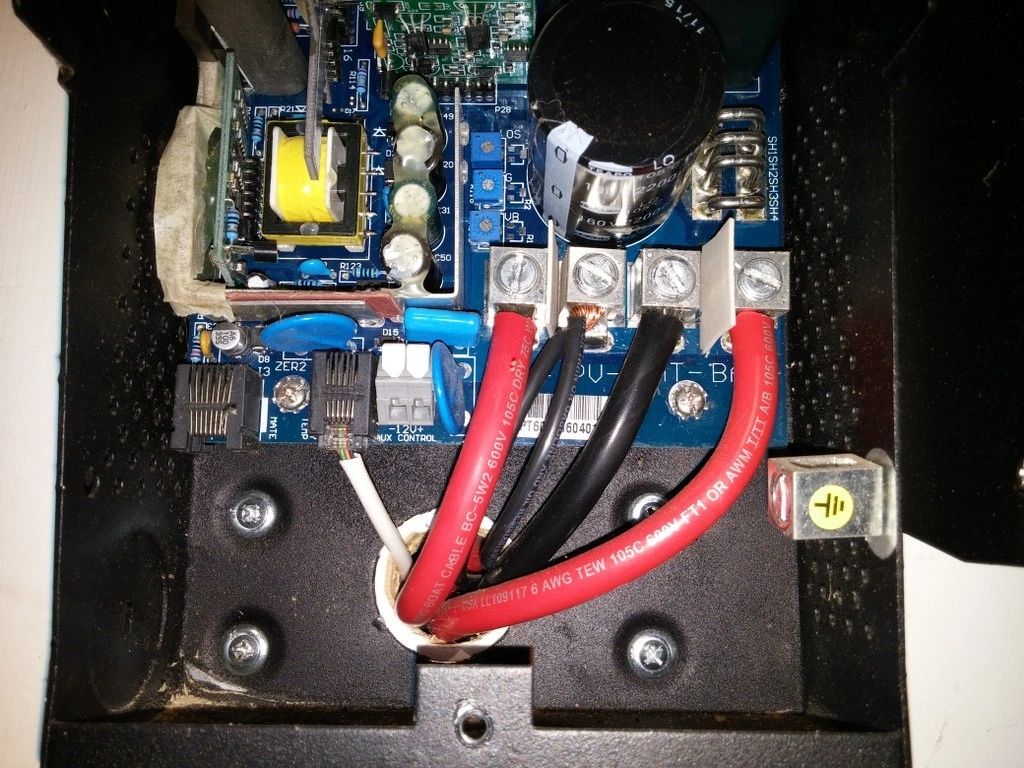RTFM!!! That stands for Read The Fine Manual. There are variants on that acronym, depending on your vocabulary.
That’s what we used to say when a customer wanted to know how to work something he bought from us, but was unwilling to read the instructions. This happens a lot with solar stuff, too. You may have products that can do more work for you, saving you from having to buy other gear. Wouldn’t you like to know stuff like that?
Case in point, I had a problem with having too much power on a sunny day with lots of puffy cumulus clouds. The charge controllers would get all settled down in the shade of the cloud, then it would pass and it’d go high enough to trip overvoltage conditions on the inverter and/or one of the charge controllers. The one charge controller would shut down until manually reset, the inverter would clear itself as soon as the other charge controllers caught up with the increased sunshine, usually just a couple of seconds. It really wasn’t a huge deal to me, but the princesses do not like to have their afternoon DVD features interrupted, not even for a few seconds.
I can think of lots of ways of dealing with this. Setting the dominant charge controllers worked out most of it, but it could still happen. A diversion load controller, like the windcharger crowd uses would be perfect, except it costs several hundred bucks for one of those. I think it is a C40 charge controller that some folks use for solar can do the same trick, but I don’t have one and don’t want to spend several hundred bucks for one of those, either. You should see a pattern here about my reluctant spending habits.
In my younger days, I’d have simply designed and built a custom controller to disconnect several banks of solar panels, putting the system on a more defensive stance. I don’t want to be bothered with that, anymore.
It turns out, though, if I just RTFM on stuff I already own, lots of gear has extra functionality built in that nobody ever uses or maybe they under use it. For example, let’s take the FlexMax family of charge controllers. If you’ve bought one of John’s kits, there’s a good chance that you have one or more of these, already. It is a popular model and built like a tank. Pop the hood and you will discover a tiny connection block that is programmable to drive a relay six ways from Sunday.
It’s the little gray terminal block marked 12v Aux Control on my revision.

This won’t do much as it is, but it will drive a 12v relay like the one that beeps the horn or rolls up the windows on your car. You can buy these, with a wired socket, at your auto parts store or Ebay. The relay, in turn, can control 30 or 40 amps of load or drive a contactor to solve my problem by disconnecting some banks of solar when the battery is charged. It can be programmed normally on, normally off, high voltage trip, low voltage trip or more, if you RTFM.
What can you do with this? Well, you can control a light to come on at night and off during the day. You can use it to enable high power loads, like a water heater or an a/c, when the battery is happy and not when it needs a little help, like on a cloudy day. Charge your electric vehicle when the main bank is good. Sound an alarm if the battery is low. Turn a fan on or off if your equipment room gets hot/cold. This thing has skills!
Study the description of the capabilities and you may think of more ways to use it. RTFM!
By: Neal Collier
